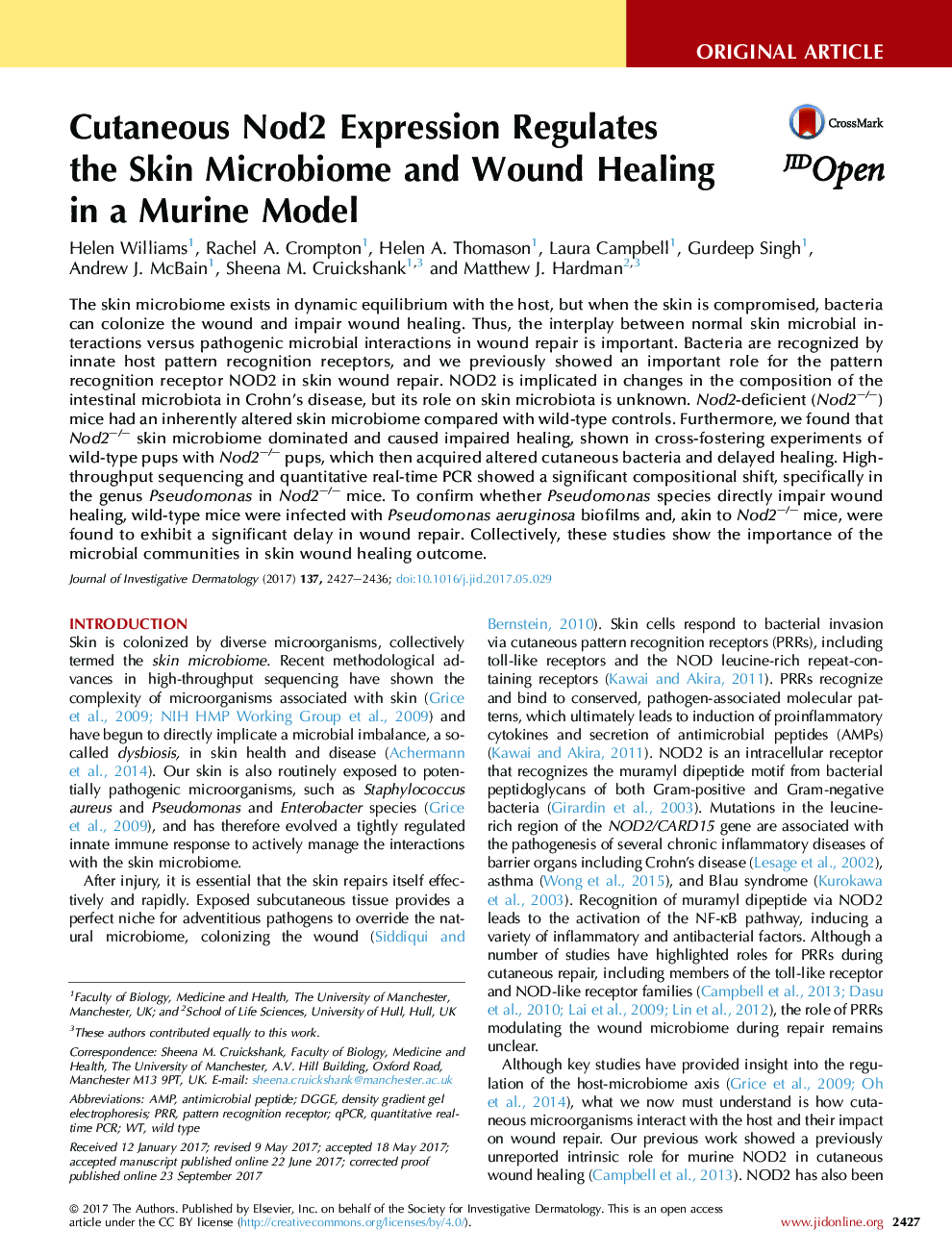| Article ID | Journal | Published Year | Pages | File Type |
|---|---|---|---|---|
| 5649162 | Journal of Investigative Dermatology | 2017 | 10 Pages |
The skin microbiome exists in dynamic equilibrium with the host, but when the skin is compromised, bacteria can colonize the wound and impair wound healing. Thus, the interplay between normal skin microbial interactions versus pathogenic microbial interactions in wound repair is important. Bacteria are recognized by innate host pattern recognition receptors, and we previously showed an important role for the pattern recognition receptor NOD2 in skin wound repair. NOD2 is implicated in changes in the composition of the intestinal microbiota in Crohn's disease, but its role on skin microbiota is unknown. Nod2-deficient (Nod2-/-) mice had an inherently altered skin microbiome compared with wild-type controls. Furthermore, we found that Nod2-/- skin microbiome dominated and caused impaired healing, shown in cross-fostering experiments of wild-type pups with Nod2-/- pups, which then acquired altered cutaneous bacteria and delayed healing. High-throughput sequencing and quantitative real-time PCR showed a significant compositional shift, specifically in the genus Pseudomonas in Nod2-/- mice. To confirm whether Pseudomonas species directly impair wound healing, wild-type mice were infected with Pseudomonas aeruginosa biofilms and, akin to Nod2-/- mice, were found to exhibit a significant delay in wound repair. Collectively, these studies show the importance of the microbial communities in skin wound healing outcome.
